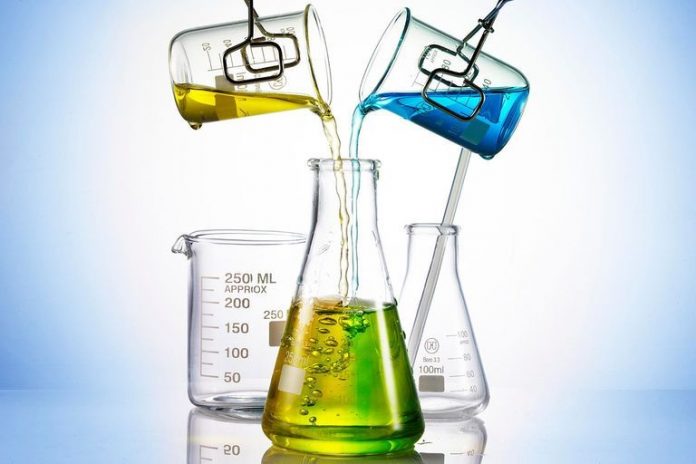Dawn is breaking on the Hydrogen Economy and nations across the developed world are ramping up investments in technologies and infrastructure. This month, our columnist examines the various technologies to produce Green Hydrogen by splitting water using renewable power. The Hydrogen Economy is estimated to grow into a $12 trillion behemoth in the next three decades.
Green Hydrogen
Early during the present pandemic, on 20th April, the US oil benchmark West Texas Intermediate dropped below zero, hitting a jaw-dropping value of minus $37.63. But even more remarkable was the calmness with which the markets greeted this surreal information. Apparently, the world was expecting this sooner or later and was not prepared to shed tears for the impending demise of the fossil fuel. Though the fossil fuel may be around for some more decades, the bugle heralding the dawn of the Hydrogen Economy has been sounded loud and clear.
Hydrogen Economy
The idea of a Hydrogen Economy appears to have been first mooted 50 years ago in a concept paper – Towards a Liquid Hydrogen Fuel Economy – by Lawrence Jones in 1970. The environmental benefits of the Hydrogen Economy are only too obvious, yet high cost and lack of infrastructure has held back its adoption all these years. But with the climate change monster’s foot already in our door, there is scarcely a moment to waste, notwithstanding even the ongoing pandemic. If anything, the pandemic has only heightened the public awareness of health and environment. Politicians and policymakers can ill afford to be blind to this altered public perception.
Colours of Hydrogen
Three different kinds of Hydrogen are being recognised based on their environmental footprint. Grey Hydrogen is produced by steam reforming of fossil fuels, usually Natural Gas. Hydrogen derived from fossil fuels, but accompanied by CO2 capture, is dubbed as Blue Hydrogen. Green Hydrogen, the most sustainable variant is obtained by electrolysis of water using renewable energy. A deep synergy exists between Green Hydrogen and renewable energy. Cheaper renewable energy will drive down the cost of Green Hydrogen. Also Hydrogen may be a more sustainable alternative to metal-based batteries when it comes to storing and smoothening out the uneven production of power from renewables. The share of renewables in global electricity generation was 28% in Q1 2020 and is expected to grow to 45% by 2040.
Technology
Water splitting by electrolysis is more than 200 years old and was first demonstrated in 1800 by William Nicholson and Anthony Carlisle. The first industrial electrolyser was constructed in 1888 and by the turn of the century, few hundred electrolysers were in operation. Electrolysis of water for onsite generation of Hydrogen has been for very small volumes. This has to be scaled up by several orders of magnitude in a robust Hydrogen economy. Two matured technologies are available today for producing Hydrogen by electrolysis of water – Alkaline Electrolysis and Proton Exchange Membrane (PEM). Some more technologies are in advanced stage of development and are expected to break the existing duopoly.
Alkaline Electrolysis
Alkaline Electrolysis, the older of the 2 established technologies, typically uses 30% KOH solution as the electrolyte. The cathode and anode are separated by a porous diaphragm, which was historically asbestos based. Following the ban on asbestos, many other materials have been developed. The electrolyser is operated at a maximum temperature of 90 degrees C and the pressure is limited to 30 bar. The current density is typically between 2 and 4 KA/m2 and a representative power consumption is 4.5 KWH/Nm3 of Hydrogen. The largest Alkaline Electrolysis plant was started up in Japan, in March this year. It can produce 1200 Nm3/hr (900 tpa) of Hydrogen.
PEM
Proton Exchange Membrane (PEM) technology, also known as Polymer Electrolyte Membrane technology was first deployed in 1970s in space and military applications. The largest PEM facility for production of Hydrogen is expected to go on stream this year in Germany, befittingly at the site of the country’s largest refinery – Shell Rheinland Refinery near Cologne. The plant will consume 10 MW power to produce 1300 tonnes of Hydrogen per annum. Central to the PEM technology is a polymer membrane that electively transports protons from the anode to the cathode. The technology has several advantages over Alkaline Electrolysis. These include higher current densities, typically 5 times higher than the Alkaline Electrolyser. But a more significant advantage is its ability to respond to fluctuations in power, typically associated with renewables. The PEM cell is also safer because the membrane acts as an effective barrier between Hydrogen and Oxygen. PEM cells are expensive because the electrodes have materials like Platinum as catalysts.
AEM
Anion Exchange Membrane (AEM) technology seeks to build on the advantages of PEM and Alkaline Electrolysis. Operating at higher current densities and using less expensive materials it aims to lower the investment cost significantly. At the heart of the AEM technology is the membrane that will selectively transport hydroxyl ions from the cathode to the anode. The membrane is still under development and has received a funding of $ 2.4 million from European Union’s research programme. The membrane is expected to be in operation by 2022. The project sponsors are targeting to bring down the installed cost of AEM plants to $600-$700 per KW against $1200/ KW for PEM and $950/KW for Alkaline Electrolysis.
SOEC
A dark horse in the arena of Hydrogen Economy is the Solid Oxide Electrolysis Cell (SOEC). The cell operates at high temperatures in the range of 700 to 1000 degrees Celsius and reverses the process occurring in a fuel cell, converting electrical energy into chemical energy. Power required for SOEC is significantly lower, typically 3 KWH/Nm3 Hydrogen as against 4.5 KWH/Nm3 Hydrogen for Alkaline Electrolysis. The main advantage of SOEC lies in the possibility of co-electrolysis of steam with CO2 resulting in syngas, which can then be used as a building block for the production of various hydrocarbons. The high temperature operation however poses many material and engineering challenges including the structural stability of the electrodes. The technology is still in a nascent stage and much needs to be done before it can see the light of commercialisation.
Epilogue
Hydrogen is expensive today and accounts for only about 1% of the global production of Hydrogen. International Energy Agency (IEA) estimates the cost of Green Hydrogen at $3 – $7.5 per kg compared to $0.9 – $3.2 per kg for Grey Hydrogen. For Green Hydrogen to become competitive, two things need to happen – Electrolyser costs have to drop and renewable energy has to get cheaper. Big investments in these two areas are expected to drive down the costs in the next two decades.
Readers’ responses may be sent to:
k.sahasranaman@gmail.com or
chemindigest@gmail.com

































